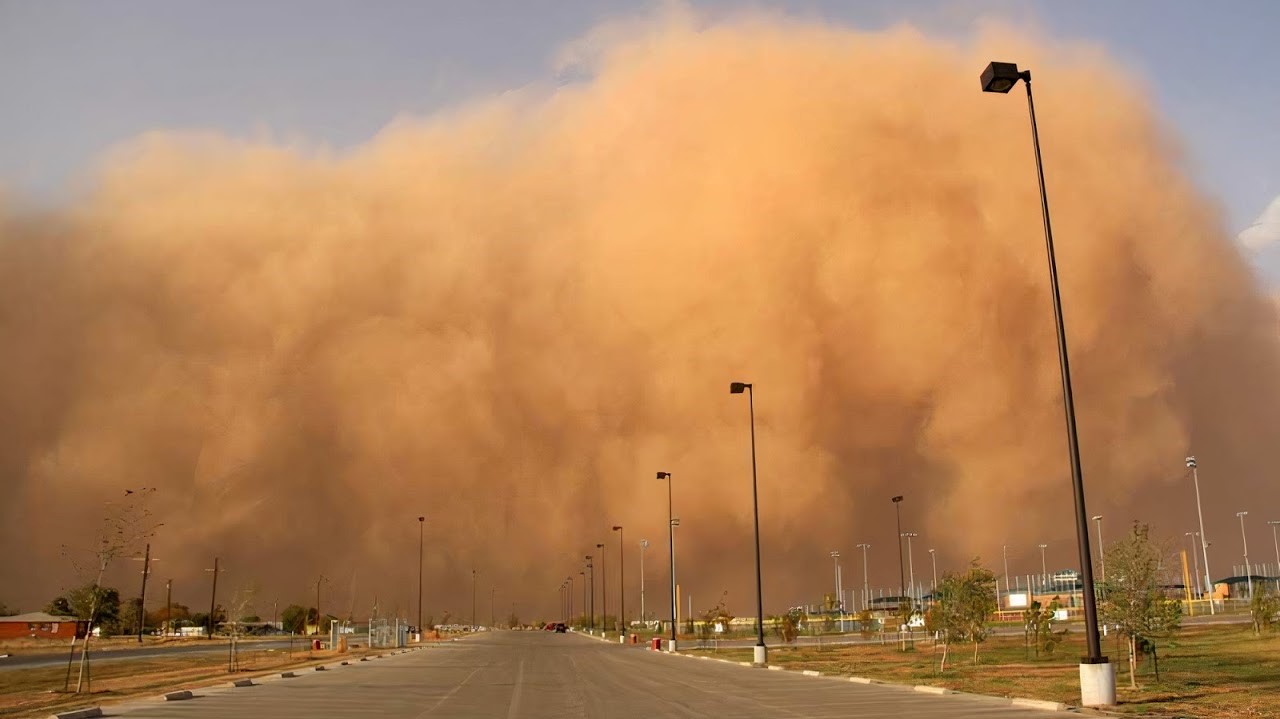
Samarkand is covered by sand storm
Taken from Repost.uz
#Sandandduststorms #SDS #UNCCD #CAREC #DroughtandSDS #Central Asia
Sand and dust storms (SDS) occur when strong winds, with velocity exceeding 1m/s, blow over dry bare soil and lift large amounts of soil particles into the atmosphere, which are transported hundreds to thousands of kilometres away from their source. Arid and semi-arid regions around the world are the main sources of dust particles detected in the troposphere. Central Asia is one of the regions facing the adverse effects of SDS. Therefore, the Secretariat of the United Nations Convention to Combat Desertification (UNCCD) is working closely with the Central Asian countries in lowering the risks of SDS and employing relevant preventive measures.
According to the World Meteorological Organization, particles elevated by SDS are known to cause or exacerbate following health issues (https://public.wmo.int/en/our-mandate/focus-areas/environment/SDS):
- Coughing and wheezing;
- Asthma, bronchitis, COPD and other obstructive airway diseases;
- Viral, bacterial and fungal lower respiratory tract infections;
- Cardiovascular diseases.
Dust storms are detrimental to human health because they carry particles that can enter lungs and, in the case of particles less or equal to PM25, even enter the bloodstream. Depending on the weather conditions, dust particles can stay suspended in the atmosphere for up to several weeks.
Sandstorms are created when wind lifts sand particles (60 microns or greater in size) into the air. Generally, sand particles are elevated to a height of up to 3 metres. Sometimes, however, sandstorms travel as high as 15 metres above the ground. When inhaled, sand particles are usually trapped in the upper airway causing mucus membrane irritation. As in the case of dust storms, sandstorms may lead to such conditions as:
- Eye, nose and throat irritation;
- Coughing and wheezing;
- Pre-existing airway diseases, such as asthma, bronchitis or COPD.
It should be noted that unlike duststorms, sandstorms also have a negative economic effect as sand particles act as an abrasive material that damages equipment and infrastructure, contaminates oil and petroleum tanks, clogs filters and disrupts transportation routes.
According to United Nations Economic and Social Commission for Asia and the Pacific (UN ESCAP), the drivers of SDS include land degradation, desertification and climate change. Unsustainable land and water use, extreme wind events and severe droughts are among the factors that exacerbate SDS. In terms of economic impact, SDS cost an estimated $5.6 billion annually in the Asia-Pacific region.
Recognizing the increasing risk of SDS, UNCCD Parties adopted decisions necessary to address their negative impact (31/COP.13 and 23/COP.14). In Central Asia, the UNCCD Secretariat is supporting governments in developing and implementing risk reduction strategies for SDS, while mobilizing experts, partnerships and resources. This will help Central Asian countries achieve stronger regional advocacy and capacity to effectively enhance preparedness and resilience to SDS.
Information about the Project:
In January 2020 in all five countries of Central Asia with the financial support of the Secretariat of the United Nations Convention to Combat Desertification (UNCCD) the project "Regional approaches in combating sand and dust storms and drought" was launched. The project is implemented by the Regional Environmental Centre for Central Asia (CAREC), which works in close cooperation with designated national institutions and UNCCD National Focal Points in each of five countries.
Central Asian countries are highly exposed to drought and sand and dust storms (SDS). This problem is especially relevant for areas outside the highlands, where semi-arid and arid climate prevails.
To assist member countries in improving their preparedness and resilience to drought and SDS, the UNCCD Secretariat, in collaboration with a number of partners, has developed mechanisms to promote policies to combat these hazards. The Secretariat has supported countries in developing national plans, methodologies and tools for dealing with these natural events. In particular, a set of drought management measures has been developed, an SDS compendium and a global SDS sources base-map have been compiled.
You can learn more about the Project and its activities here:
− http://carececo.org/main/activity/projects/droughtSDS/
